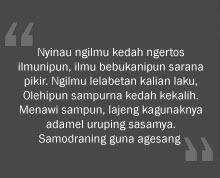Disclaimer: This information is intended as a guide only for educational purposes... There are no hard and fast rules when it comes to using color as a design element. Color affects people differently for different psychological and cultural reasons. Have Fun and experiment with different combinations the next time you use color...
The following information can be applied to web site design elements as well as to the psychology of colours in your book and e-book cover designs.
The purpose of designing your e-book cover is to sell books with every element of its creation aimed towards this goal.
Your e-book cover is an extension of your book and is never considered as a separate element.
Used properly, the science of color is a powerful tool in your marketing strategy, being the first thing we notice and the last thing we forget.
The color of the cover sets the tone, foundation, mood and evokes subtle but powerful emotional feelings that increase your chances of making a sale making it a real object for your viewers with real value.
The competitive advantage and selling power of colour comes from its ability to communicate emotion. Color establishes an instant feeling and connection with your e-book acting as a visual psychological trigger about the essence and its possible contents.
When designing books and e-book covers (or your website) most people concentrate on the graphics and logos (design) and the content, not to paying much attention to the psychological associations we have with particular colors.
In marketing, red, blue and brown shades have found to be the safest colors for use on the internet.
Red is perceived as an empowering color by your readers.
Blue is generally the first choice when appealing to people who are sensible and responsible and is used in many professional business settings i.e. the navy blue suit worn by many as a sign of professionalism and responsibility e.g. many bank employees wear blue.
Brown is used when you want to give the impression that you are stable and solid and the information you offer is stable and solid information.
As simple as it may sound the color thrust of your e-book can open the initial door to your buyer’s heart much quicker than mere words can.
Special Note: There is however an exception to this statement. A certain percentage of the population may not be able to perceive color correctly such as in the case of people with a common hereditary red-green color blindness condition. These factors will need to be taken into account in your overall design approach.
To view or obtain a web colour palette reference chart relating to colour blindness visit: http://visibone.com./colorblind/
Although words are a powerful trigger, and you should have a good sales copy page, the subtlety of colour in a thoughtfully designed cover picture displayed on your site can be "worth a thousand words" in terms of sales.
It is well known in advertising circles that potential customers may return up to seven times before making an actual purchase from you.
You can increase your chances and make a quicker sale by placing a thumbnail picture of your book cover on your site. This has been shown to increase downloads and boost sales. People do tend to "judge a book by its cover" and not by description alone.
Your cover design involves making decisions about all the various elements that will eventually make up the finished look.
This includes the colour combinations used, fonts for title and subtitle, the effective use of white space, what photography or images you should you use (or maybe none at all) and where the authors name and copyright marker will be placed.
Each of these decisions are made with the view of motivating your customer towards the purchasing your e-book.
Tip. An e-book project should be treated as a series of steps and at each step you must decide how people will be drawn to your e-book over all the millions of other e-books proliferating on the web (especially marketing books) and to make the decision to purchase from you and not your competitor.
Market researchers have spent time identifying the colors and the most likely effect they have on us. Your target market should be taken into consideration as you plan your design elements.
Everything we buy, eat, wear, or the colours in our immediate environment all provoke a psychological and emotional response.
Some colors mean the same universally others are significant by association, attitudes, preference or cultural beliefs which can differ dramatically.
Some examples of this include
- White is the color for marriage in western cultures, death in some eastern cultures.
- Black is a sign of death and mourning in some Western Cultures (hence the tradition of the black armband in some countries), but means wealth and abundance in the Chinese culture.
- Yellow is sacred to the Chinese, but signifies sadness in Greece and Jealousy in France. Although yellow is a noticeable colour it is labeled as cheap in many parts of the world.
- People in Northern climates prefer cooler colors.
- People from tropical countries respond more to warm colors.
Research into consumers shopping habits shows:
- Traditionalists tend to respond to pastel shades - e.g. sky blue, rose or pink.
- Impulse buyers tend to respond best to Royal blue, black or red-orange.
- Shoppers who plan and stick to budgets tend to respond best to navy, light blue, teal, and pink.
If the subject of your e-book is about ways to save money consider using navy, light blue, teal or pink in your overall cover design.
Colour and our association with food:
Green, Brown or Red is the most popular colors we associate with food.
Red is often used in restaurant décor especially in Chinese culture to aid appetite stimulation which in turn increases wealth for the owner.
Although blue is a very popular colour universally it is the least appetizing color when it comes to the food because of primitive instinct associations we have with the blue, black or purple colored foods that make us wary of them.
Psychologically these foods resemble food spoilt by bacterial moulds or foods which are poisonous to us e.g. deadly nightshade berries. Eating off of blue plates however seems to have no effect on our perception of the food quality.
You have approximately 1/6 of a second (although some say it is 3-5 seconds) for your design elements to impact on your potential purchasers before they accept or reject the message your colors are conveying.
Thoughtful use of color for everything from your Web Site design to your e-book cover advertising design can define the mood for your potential customers and visitors to your site, as well as reflecting your own identity and branding through images and logos.
Sales are after all are the primary reason you have established your web site, at least this is true in most cases.
Thursday, May 11, 2006
Color Psychology for e-Book Cover Design
Subscribe to:
Post Comments (Atom)

















0 comments:
Post a Comment